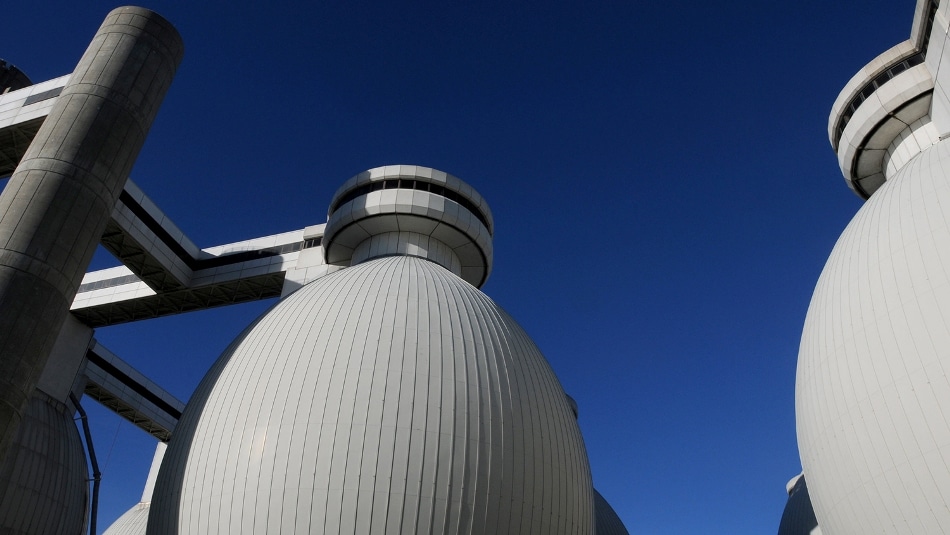Nov 14 2019
Researchers at North Carolina State University have developed a new method to convert restaurant grease and sewage sludge into methane. To date, this is the most efficient method ever developed.
 Anaerobic digesters, like those pictured here, can be used to convert sewage sludge and fatty waste into natural gas. Image Credit: Rachel Schowalter.
Anaerobic digesters, like those pictured here, can be used to convert sewage sludge and fatty waste into natural gas. Image Credit: Rachel Schowalter.
After the sewage is treated, a solid sludge known as biosolids remains in wastewater treatment plants. For many years, utilities have treated these biosolids with microorganisms that emit methane. But of late, grease interceptor waste (GIW) is being added to the mix.
Grease interceptors are generally used for trapping grease, oil, and fat from food service establishments so that they do not block up sewers.
When GIW with their biosolids are added to the mix, utilities can generate more methane and make the entire process more efficient. However, a number of challenges exist.
Turning biosolids and GIW into a renewable source of clean energy is a laudable goal. But if you add too much GIW into the anaerobic digester they use to treat biosolids, the system goes haywire—and methane production plummets.
Francis de los Reyes, Professor, Department of Civil, Construction, and Environmental Engineering, North Carolina State University
de los Reyes is the lead author of the study.
He continued, “Our goal with this work was to figure out the best balance of biosolids and GIW for maximizing methane production. And we were able to make significant advances.”
The scientists discovered that when the amount of GIW fed into the digester is increased slowly at a time, they can increase the proportion of the GIW in the mix to the point where it constituted 75% of the total feedstock, or volatile solids.
This is significantly higher than the typical amount of GIW added to the biosolids in existing facilities.
Francis de los Reyes, Professor, Department of Civil, Construction, and Environmental Engineering, North Carolina State University
This enabled the scientists to realize a maximum methane yield reported so far for lipid-rich waste—that is, 0.785 L of methane for each gram of volatile solids added into the digester.
This is roughly twice what is commonly reported for similar systems. This should make methane production on a commercial scale more economically attractive for many wastewater treatment facilities, which may encourage them to capture and sell their methane, rather than burning it off on-site.
Francis de los Reyes, Professor, Department of Civil, Construction, and Environmental Engineering, North Carolina State University
The scientists have also identified a set of microbes that seem to play a major role in changing lipid-rich waste into methane. The team is tracking this finding by performing studies on other types of food waste, like meat and vegetable/fruit waste.
The researchers are also studying the underlying microbial ecological concepts to explain how the required microbial species are able to dominate and persist in the ecosystems found within the waste digesters.
The paper titled “Increased loading stress leads to convergence of microbial communities and high methane yields in adapted anaerobic co-digesters” has been published in the Water Research journal.
The study’s first author is Ling Wang, a former PhD student at NC State and currently a postdoctoral researcher at the University of Chicago.
The article was co-authored by Elvin Hossen, a PhD student at NC State; Tarek Aziz, an assistant professor of civil, construction, and environmental engineering at NC State; and Joel Ducoste, a professor of civil, construction, and environmental engineering at NC State.
The study was supported by the North Carolina Water Resources Research Institute.